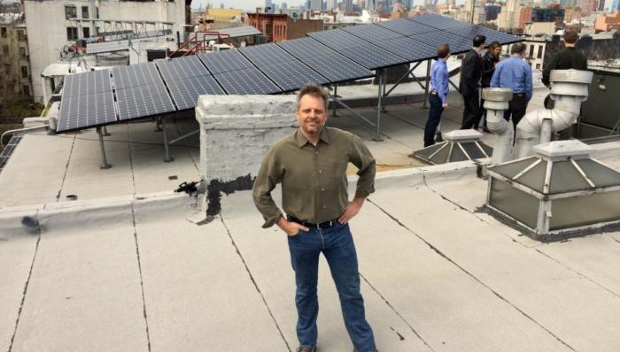Residents of the Park Slope area of Brooklyn are now able to sell power generated from rooftop solar panels via a microgrid enabled by a blockchain ledger that records every transaction made with a local utility.
The physical microgrid, set up by Siemens Digital Grid Division, includes network control systems, converters, lithium-ion battery storage and smart electric meters. In case of another hurricane like Sandy in 2012, residents on the microgrid would continue to have power for a time even during a blackout as they could switch over to battery reserves.
A microgrid is a form of distributed energy generation that can function independently from the traditional, centralised regional power grid; it can enable towns, small cities or corporations to develop their own energy sources and power storage systems (via lithium-ion or flow batteries), distribute that energy and even sell excess power back to local utilities.
The Brooklyn Microgrid blockchain database is a Web-based bookkeeping system that uses cryptographic technology to save energy data in a way that is both inexpensive and forgery-proof, the companies said.
The Brooklyn Microgrid enables residents to sell energy back to the local utility – a process known as ‘net metering’ – and it allows those without solar panels to purchase green power credits from their neighbors. The blockchain platform for the microgrid is enabled by Brooklyn-based energy startup LO3 Energy.
Blockchain is a decentralised electronic, encrypted ledger or database platform – in other words, a way to immutably store digital data so that it can be securely shared across networks and users.
The basis for cryptocurrency Bitcoin, blockchain allows a group of users to transact without an intermediary, like a bank or utility.
“Intermediaries are centralised, which makes them vulnerable. They are costly. They slow things down. They capture data about parties in the transaction, which could undermine their privacy,” Alex Tapscott, the CEO and founder of blockchain investor Northwest Passage Ventures, said in an interview.
Sharing economy
Blockchain technology will enable what Tapscott calls the ‘second generation’ of the Internet, where not just e-mails, documents and websites are shared, but literally anything of value can be shared between disparate users because it’s more secure and there’s no single point of failure.
“Money, financial assets, titles and deeds, intellectual property can be moved, stored and managed securely and privately, and where trust isn’t established by an intermediary but rather through mass collaboration, cryptography and clever code,” Tapscott said. “And as a result, this new platform’s going to have a tremendous impact on basically every industry, business and institution in the economy and in society.”
LO3 Energy’s TransActive Grid, which is the blockchain platform set up for the microgrid, timestamps each transaction as a chain of secure blocks, which means every energy transaction is documented.
Using the blockchain-enabled microgrid, the 50 or so homeowners, which include brownstones, apartment houses, schools, a gas station, a fire station and factory buildings, can now trade very small amounts of green electricity without any intermediaries, LO3 Energy said in a statement.
Prices can be determined by automatic auctions oriented toward the top price per kilowatt-hour that an energy consumer is willing to pay.
The Brooklyn Microgrid not only receives energy from rooftop solar, but also from the nearest conventional power plant. So homeowners without solar panels can get credit for Green energy from their neighbors’ PV panels, which is what consumers have historically been buying when they choose energy generated from renewable sources.
The Brooklyn Microgrid’s goal is to have 1,000 participants by 2018. It also plans to install more battery storage units and even more extensive solar panel systems.
“All of this will be supported by the Siemens digital grid division’s microgrid management system, which will make it possible to establish a self-sufficient power supply for the microgrid in the event of a city-wide blackout,” LO3 Energy said.
IDG News Service








Subscribers 0
Fans 0
Followers 0
Followers